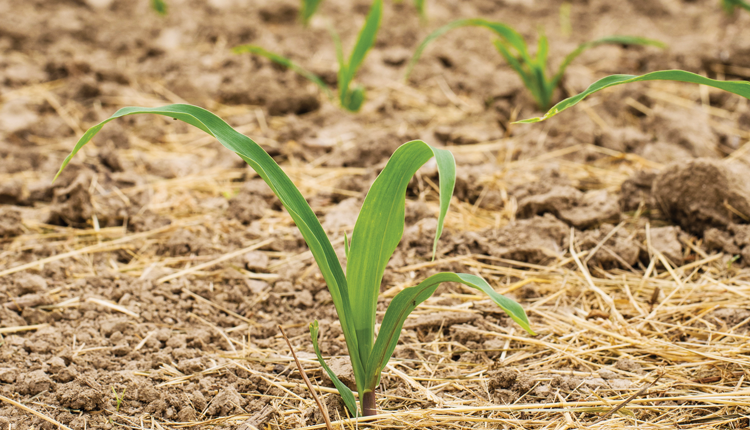
With all the exciting advances in forage and field crops, including reduced-lignin alfalfa, drought-resistant corn hybrids, and shredlage, agricultural lime seems like a boring topic. The application of “ag lime” has been around much longer than anyone reading this has been involved in agriculture, so by now they should realize that lime needs to be a part of most cropping systems.
Yet, we still find crop yields and quality adversely affected by low pH soils. Efforts to improve corn yields often mean higher nitrogen fertilizer rates, and over time nitrogen fertilizers acidify the soil. This can result in the need for lime application to fields where a naturally high soil pH had previously meant it wasn’t needed.
More nitrogen, more lime
One advantage of Nutrient Management Plans or NMPs (a part of Concentrated Animal Feeding Operations or CAFO regulations) is that farmers with NMPs are required to soil test all cropland on a regular schedule, something they should be doing anyway. Routine soil analysis will prevent the kind of surprise a farmer in northern New York got a number of years ago prior to CAFO regulations.
After many years of not doing soil analyses, he decided to test all his cornfields, including those that were to be seeded to alfalfa the following spring. He was shocked to find that the combination of high corn yields and nitrogen fertilizer rates that had risen in recent years had resulted in pH values in a number of his (primarily clay loam) soils at 6.0 or below.
Since his crop rotation included alfalfa, which should have a soil pH of at least 6.8, he was faced with a large — and unexpected — lime bill. To some extent this farmer was a victim of changes in his cropping practices: He started growing more corn for silage and high-moisture grain so his corn acreage grew, and since there wasn’t as much manure available per acre of corn, his purchased nitrogen fertilizer rate also rose.
It takes about 400 pounds of agricultural limestone to counteract the acidity from 100 pounds of nitrogen from commercial fertilizer (including anhydrous ammonia, urea, and UAN solutions). Ammonium sulfate is more acidifying than other nitrogen sources, requiring perhaps about 700 pounds of lime per 100 pounds of nitrogen.
Dairy manure has a pH of about 7.0, which is neutral. Therefore, how much lime a farmer will need to apply to his cropland depends to a considerable extent on how much he relies on manure versus nitrogen fertilizer.
Not enough of the good stuff
As soil acidity drops below 6.0, the availability of some nutrients declines, most notably phosphorus, but to some extent magnesium as well. And as the soil becomes more acidic, other nutrients can elevate enough in availability to be toxic to some crops.
The result — not enough of the good stuff, too much of the bad stuff — is what’s known as “acid soil syndrome” in corn. The leaves on young corn plants take on a reddish tint due to insufficient phosphorus uptake while at the same time exhibiting signs of aluminum and iron toxicity.
Low soil pH can also interact with some pre-emergence herbicides, particularly atrazine and other triazines. A pH level under 6.0 can cause triazine herbicides to be adsorbed (bound) to soil particles, decreasing their effectiveness in controlling weeds because they aren’t available in the soil solution. These bound herbicides are then released when the soil is limed.
If agricultural lime application is postponed until soon before planting a sensitive crop such as alfalfa, this release of bound herbicide can result in damage to the alfalfa seeding. That’s one reason why we recommend to apply lime at least one full year before seeding alfalfa when soil pH is 6.0 or less. Ag lime is simply ground limestone — lime takes time!
There’s a difference between soil pH and lime requirement: A simple colorimetric pH test can accurately determine soil pH but not the amount of lime required to elevate pH to the desired level. That’s why the lime requirement for each field should be determined by a complete soil analysis. At the same soil pH — especially with pH levels under 6.0 — there can be a difference of several tons per acre in lime needs.











